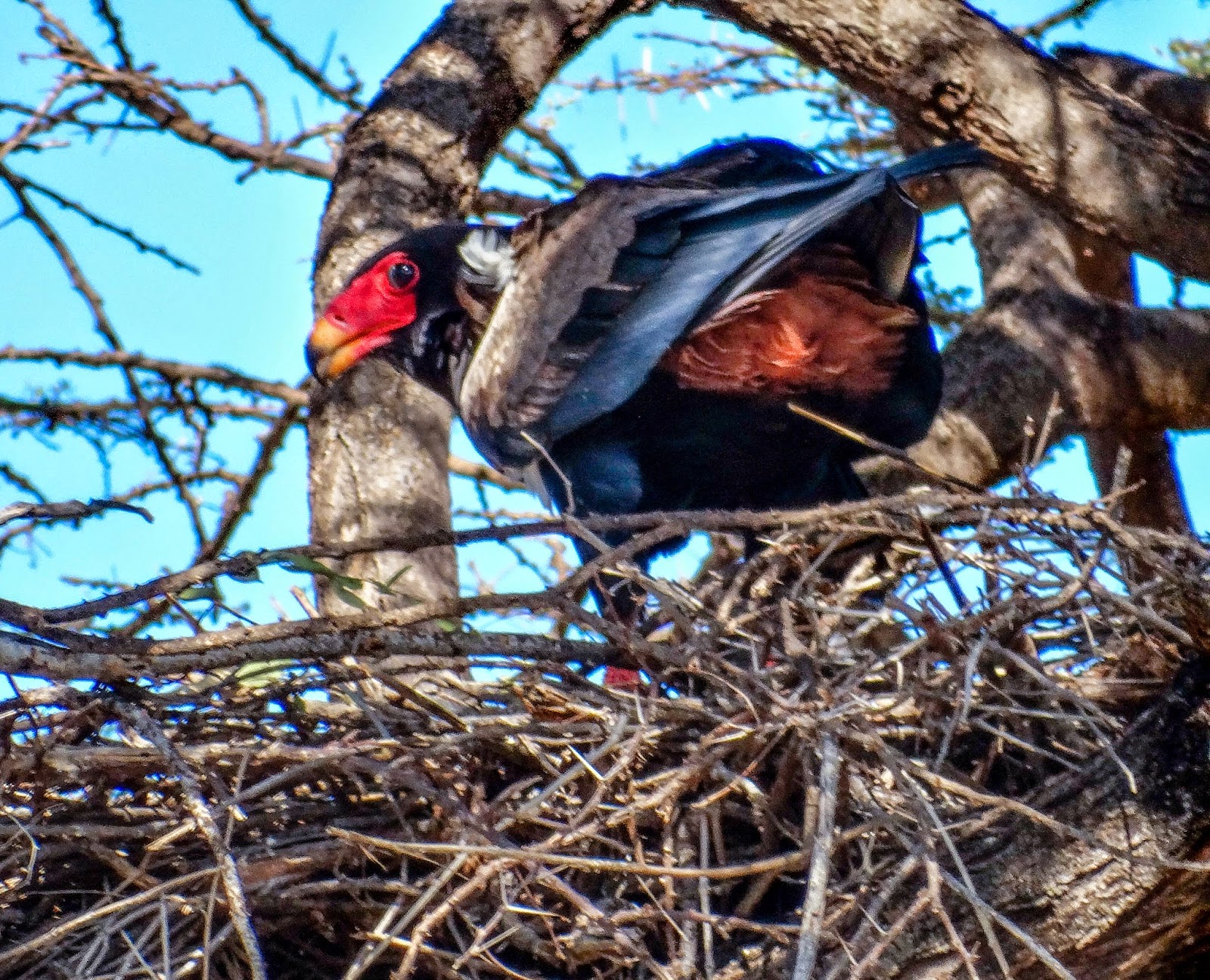Many years ago, when my brother Layne was alive, he visited Kenya on a number of occasions and told me about a restaurant called "Carnivore" that served wild game such as zebra, wildebeest, cape buffalo and eland. When we determined awhile back that we would visit Kenya, one of the first things I did was do a Google search for Carnivore so that I could make sure we got it into our itinerary. I was horribly disappointed to learn that over ten years ago the game laws of Kenya were changed and game animals can no longer be hunted, which also means that wild game can no longer be served on restaurant menus. Carnivore had to adjust to survive and it did so by becoming more of a Brazilian type restaurant, with typical meats such as beef, pork and chicken served on spits and carved and served in front of you at the table. They've maintained a semblance of the old aura by serving meats of some exotic animals that are raised on ranches, such as camel, ostrich and crocodile. We were visiting Kenya with a tour and I was going to arrange to visit Carnivore on my own, but upon learning about the changes in the menu I decided it was not worth making a special effort to get there.
 |
| Our Land Cruisers pull up to Carnivore. |
 |
| Judy and I with the greeter in the front. The lighting is horrible, but I had to use the picture anyway. The greeter remembered me at the end and the fact my brother had been here many years ago. |
As we got closer to tour time, Fun For Less Tours called and asked if we wanted to go to Carnivore to eat on our last evening in Nairobi. We happily said yes, although with much less anticipation than I'd felt earlier.
 |
| A most distinctive sight: red light emanating with steam and an incredible cooking meat smell. |
I am so glad we visited. It was much more fun than I anticipated, particularly because our entire tour group of about 35 people all attended. As we entered we were witness to a dark room with a circular pit with glowing red lights and steam rising into the air. Meats of various shapes and sizes were on spits over coals in the pit.
 |
| A picture with the flash takes away some of the magic, but gives more detail. |
We were directed to long banquet tables outside and under a canopy. It was nice to be outside. Circular serving trays with two levels were sprinkled strategically on the table and they contained various kinds of sauces for the meat like garlic and tikka masala, among others. The tray also had some salad fixings, such as lettuce (which we were trying to avoid for safety reasons), sliced tomato, cucumber and red pepper and coleslaw. We were told what types of meats the sauces were particularly good on (which turned out to be correct) and then the meat barrage started. Men dressed in straw hats, zebra striped aprons and colorful African shirts started visiting each person at the table, offering to slice them off pieces of various types of meat. Although not majorly exotic, the variety was impressive.
 |
| Doesn't this look fun! |
I had chicken livers, ox balls (their words not mine), lamb pieces (they called them chops), ostrich meat balls, crocodile, rare beef, leg of lamb, pork spare ribs, leg of pork, turkey (carved off a whole bird), chicken wings, chicken pieces and beef sausages. The menu said there were some items served that I did not get, including lamb liver and lamb sausage, both of which I would love to have tried. The best meats on the menu were the ostrich meat balls (very nice flavor and the recommended sauce on it was fabulous), leg of lamb and rare sliced beef with the tikka masala sauce sprinkled liberally on it. The ox balls were the first testicles I've eaten that were not breaded and fried. I now know why they are breaded and fried. Plain they have a weird texture, kind of soft, but also with some resistance, and they had very little taste. The bison, beef and turkey testicles I've eaten were much spicier and much more tender.
 |
| Carousel with sauces on top and salad fixings on the bottom. |
 |
| Chicken piece with sauce, beef sausage, lamb and ostrich meat ball. |
 |
| Rare beef with tikka masala sauce (yum), spinach. |
 |
| Garlic mashed potatoes, liver?, I don't remember. |
Judy was feeling the effects of a bug and could hardly eat, which gave her some attention from the waiters, as the rest of us ate like Tongans at an eating competition. It was wonderful, except for Judy not being able to enjoy it. Glad it worked out.

















































